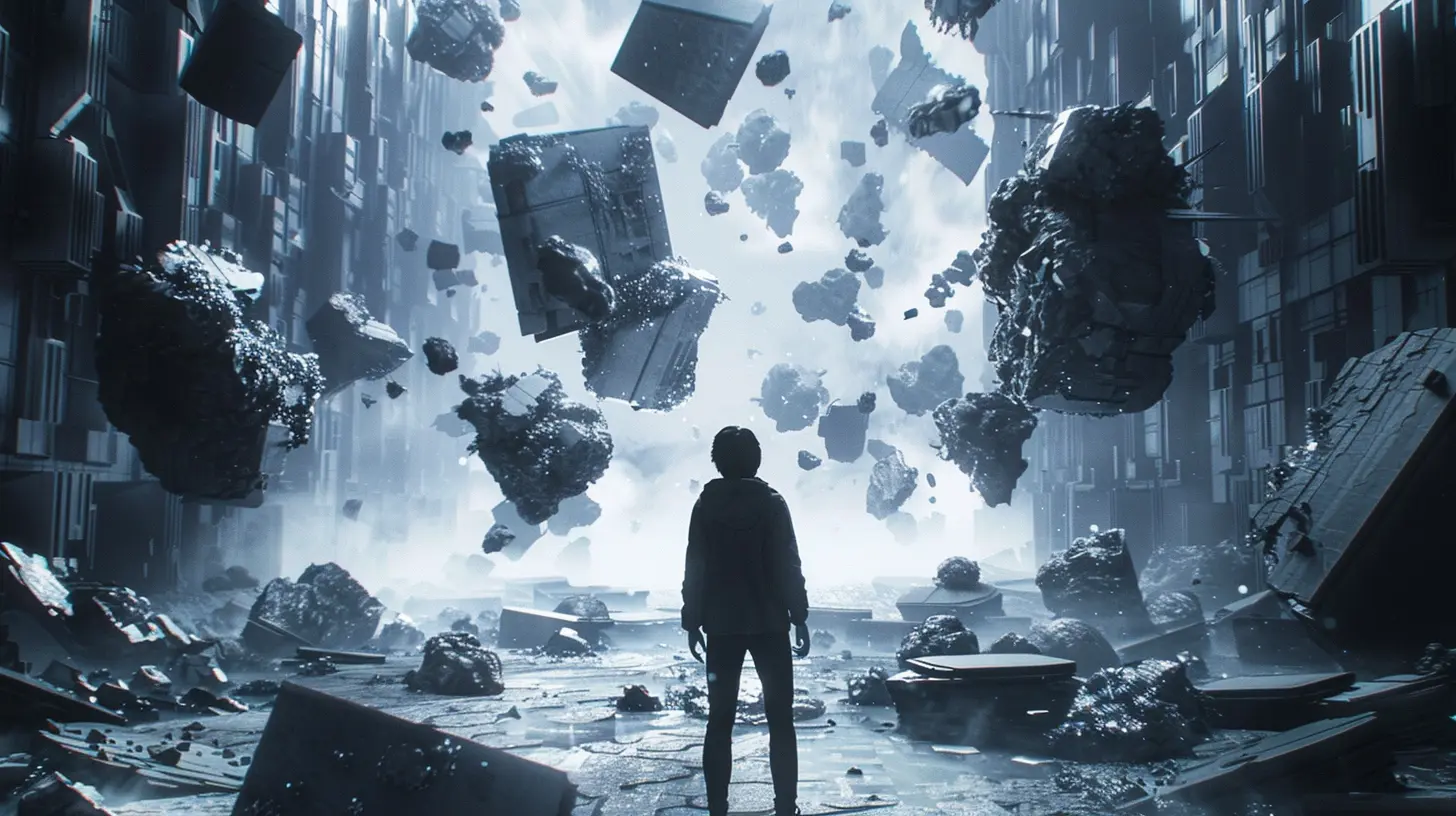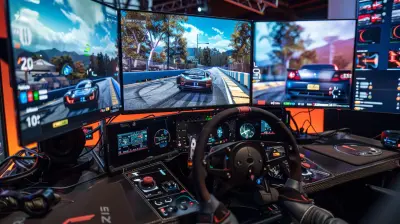Manipulating Gravity: When Physics Become the Core of Game Mechanics
13 September 2025
Let’s talk about gravity in video games—yes, that invisible force dragging everything towards the ground. In real life, gravity is a constant you don’t think about unless you’re tripping over your own feet. But in video games? Gravity is a playground for creativity, chaos, and pure fun. When developers decide to mess with this fundamental force, something magical happens: gameplay transforms.
So, what actually goes down (pun intended) when gravity becomes more than just a background detail? In this deep dive, we’ll look at how manipulating gravity in games turns simple experiences into brain-bending, adrenaline-spiking adventures. We’ll also check out some gravity-defying titles that nailed it and break down why this mechanic keeps pulling players in. Ready to float through some fantastic game design?
Why Gravity Matters in Game Mechanics
Let’s start with the basics. Gravity is an expectation—a law we subconsciously rely on. Game developers usually use real-world physics to make their worlds feel believable. But the moment they tweak gravity, our expectations get flipped upside down. Literally.When gravity becomes a tool instead of a rule, it opens up a world of possibilities:
- Platforming becomes more challenging and unpredictable
- Combat gets strategic and cinematic
- Puzzle-solving turns into spatial brain gymnastics
It’s a simple tweak with powerful effects. Kind of like giving your pet goldfish a jetpack. Suddenly, everything changes.
The Evolution of Gravity in Games
Early Games: One Direction Only
In the early days of gaming, gravity was basic. Think classic titles like Super Mario Bros. You jump, you fall—gravity’s only job was to make the player come back down.But even then, it created tension. That tiny window of airtime in Mario? It made every jump feel important. Timing became everything.
Enter Weird Gravity
As tech improved, so did devs’ willingness to mess with physics. Games like Turrican or Metroid dropped players into environments with floaty movement to simulate alien worlds. But it wasn’t until the 2000s that things really got wild.
When Gravity Takes Center Stage
Let’s check out some iconic games where gravity wasn’t just a side effect—it was the star of the show.1. Portal (2007)
Ah yes, Portal—the game that made us question everything about space and physics. While the game doesn’t technically let you “change” gravity, it does mess with your perception of direction and motion through portals.Falling from a height into one portal and flying out another? Genius. You’re basically using gravity to launch yourself across rooms. It’s like turning momentum into a weapon.
Portal's success proved that players love physics puzzles wrapped in clever mechanics, and it encouraged other devs to start bending the laws of reality too.
2. Gravity Rush (2012)
Now this one really plays with the concept. You’re given control over the direction of gravity itself. No, not just jumping higher—literally walking on walls, floating in mid-air, and shifting what's “down” on command.Kat, the protagonist, can control gravity fields and navigate a city that feels like it came from a dream. Every battle and platforming challenge is a puzzle in how to reorient your relationship with the world. It’s dizzying, disorienting, and totally brilliant.
3. Super Mario Galaxy (2007)
One of Nintendo’s most imaginative outings. This installment in the Mario franchise took platforming to a stellar new level—literally. Each level is a tiny planetoid with its own gravitational pull.You’re hopping from world to world, sticking to spherical surfaces, and flipping upside down constantly. It’s not just a gimmick; it changes how you approach every jump, enemy, and objective.
It also added a layer of charm. Bouncing between planets like a space-hopping plumber? That’s what games were made for.
4. Half-Life 2 (2004) – Gravity Gun
Okay, bear with me. The gravity in Half-Life 2 isn’t about you floating around. It’s about manipulating objects with gravity—and that’s just as cool.The Gravity Gun turned ordinary trash into deadly projectiles. You could pick up a saw blade and fling it like a ninja star, or launch a car into a zombie. It was physics meets playground mayhem.
The weapon was so satisfying to use that it practically became the game’s mascot. Who needs conventional guns when you can play god with physics?
What Makes Gravity-Based Mechanics So Engaging?
1. They Challenge Perception
Games that flip gravity force you to unlearn what you know. Up becomes down, and down becomes “what even is down?” That disorientation triggers curiosity, and curiosity is powerful. It keeps players coming back because they’re constantly discovering new ways the world works.2. They Create Freedom
When you’re not tied to a single direction, movement becomes a creative act. Do you soar through the sky, walk on ceilings, or blast off at an angle? The possibilities are endless. And more freedom means more ways to solve problems.3. They Add Spectacle
Let’s be honest—floating looks cool. Watching characters or objects defy gravity adds a cinematic flair. It makes the game feel more like a movie, only you’re in the director’s chair.Games That Should’ve Used Gravity More
It’s easy to gush over what worked, but let’s flip the script. There are games that dipped their toes into gravitational mechanics and left us wanting more.- Antichamber teased with impossible geometry but didn’t dive deep into gravity play.
- Dead Space had zero-gravity sections, but they were too few and stiff.
- Control had a telekinetic vibe that would’ve paired beautifully with gravity-flipping mechanics.
Here’s hoping sequels or future indie games pick up where these left off!
Gravity in VR: A Whole New Level
Now let’s talk virtual reality. In VR, manipulating gravity doesn’t just mess with your mind—it messes with your stomach. But done right, it’s pure magic.Titles like Lone Echo and Boneworks toy with zero-gravity movement, letting players push, pull, and float in highly immersive environments. You’re not just watching gravity act—you’re feeling it.
VR makes gravity manipulation feel real in a way flat-screen games can’t quite match. It engages your body’s senses, not just your brain.
Developing with Gravity in Mind
Designing a gravity-based game isn’t easy. Developers have to:- Create worlds that make sense in multiple orientations
- Balance freedom with clarity (you don’t want players totally lost)
- Use physics engines that support dynamic forces
But when it works? It’s unforgettable.
Think about how Super Mario Galaxy used visual cues and camera angles to keep players grounded (pun totally intended) despite wild gravity shifts. Smart design can keep chaos fun instead of frustrating.
The Future of Gravity in Games
So, what’s next for gravity in gaming?With better physics engines, more advanced hardware, and wild imagination, the sky’s not the limit anymore—because in these games, you can fall up.
We’re already seeing indie creators experimenting with multidirectional puzzles, infinite gravitational loops, and even gravity that changes based on emotions (imagine sadness making you sink and joy making you float!).
As players get thirstier for unique, mind-bending experiences, developers have every reason to keep flipping gravity on its head.
Final Thoughts: Gravity Is More Than Just Falling
Here’s the thing. Gravity in real life? Predictable. In games? It’s a sandbox full of opportunities. Whether it’s walking on the ceiling, launching yourself into orbit, or flinging furniture with a gravity gun, bending the rules of physics leads to moments of awe, confusion, and pure joy.Manipulating gravity isn’t just a gimmick—it’s a gateway to exploring how far interactions, movement, and storytelling can go in gaming. It shakes us out of our routine ways of thinking and makes everything feel fresh again.
So next time you’re falling into a black hole in-game, smile. You’re not just playing—you’re redefining the laws of the digital universe.
all images in this post were generated using AI tools
Category:
Game MechanicsAuthor:

Francesca West
Discussion
rate this article
1 comments
Zeth Baxter
Exploring the wonders of gravity in gaming opens up endless possibilities! Embrace the challenge and creativity that physics brings—it's a thrilling journey that can redefine how we play and engage!
September 13, 2025 at 3:22 PM

Francesca West
Absolutely! Embracing gravity as a core mechanic truly enhances creativity and gameplay, making for an exhilarating experience.


